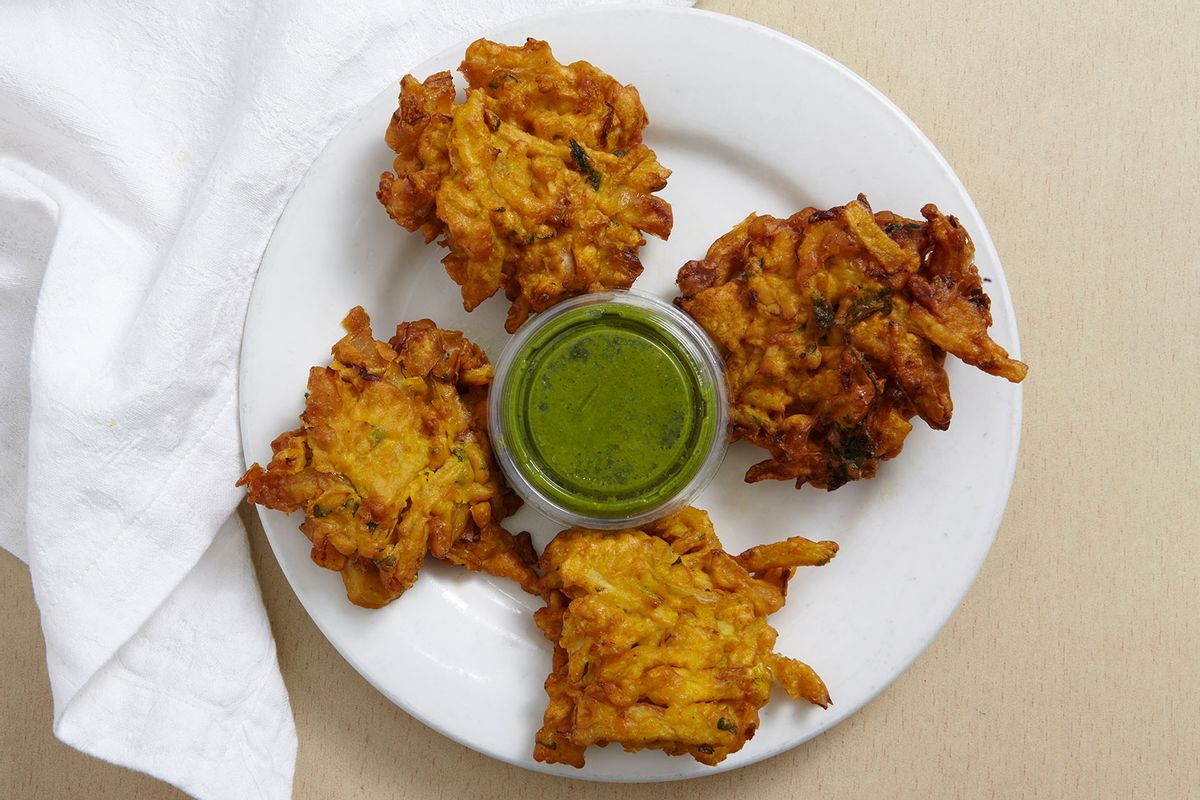How to pakora pretty much anything

Not all fritters are created equal — especially if you ask someone who grew up in a South Asian household like I did. Many of our mothers would fry up fresh pakora, a crunchy, chickpea- and veggie-based fritter, alongside verdant chutneys on any given afternoon and, of course, on holidays and other festive gatherings. Now that I’ve haphazardly thrown pakoras together on a comically stressful Gordon Ramsay cooking show, I believe you can do it too (but from the comfort of your home and without Gordon’s judgment). The formula is simple: chickpea flour, a few warm spices and just about any savory ingredients you have on hand — even a single, sliced yellow onion will work just fine to produce a spectacular batch of pakoras.
Busting out the frying oil may feel like an intimidating level of effort for everyday cooking or even for a dinner party. But, the simplicity, versatility and outright crave-worthy nature of fresh pakoras will convince you otherwise. The process takes no longer than 30 to 40 minutes, frying included, which is why making squid-filled pakoras for the judges of “Next Level Chef” felt like a no-brainer. And yes, the judges, and Gordon himself, loved every bite.
Pakora Batter Basics
My calamari pakoras prove how this riff-able fritter recipe will yield delicious results, no matter how you choose to customize it. Even the most wilt-prone veggies, like spinach or eggplant, will come out with a crispy coat of armor and stay that way far long after frying. It all comes down to the batter.
I recommend a touch of cornstarch to enhance the crisp factor, but chickpea flour (aka gram flour) is all you need to nail a pakora with fluffy insides and an exterior that audibly crackles and crunches. Start by whisking your chickpea flour, cornstarch, salt, turmeric and whole spices together in a large mixing bowl. Though it may seem obvious to immediately add water to get the batter going, instead, add your choice of thinly sliced veggies straight into the bowl of dry ingredients. Think: greens, cabbage, alliums, mushrooms, bean sprouts, root vegetable and more! My favorite variation, called beguni, is a Bangladeshi-style pakora that employs thinly sliced eggplant planks for a tempura-like final product. Adding your sliced produce directly to the dry ingredients allows the veggies to release excess moisture directly into the flour and spices. Adding the sliced veggies into a wet batter would introduce the risk of excess moisture in the batter, which would throw off the consistency.
Use your hands to toss the sliced veggies around in the dry mix, evenly coating them in the dry ingredients. Let everything meld together undisturbed for at least five minutes before assessing how much moisture was released into the batter. The dry mix will appear clumpy as it adheres to the veggies, which is when you know to add the water.
Mix Like A Pro
Designate one hand for adding water and the other for mixing the batter together. Add ¼ cup of water in 1 tablespoon increments (or a few small splashes at a time) while you toss the veggies around the batter with your designated mixing hand. Let the mixture sit again so the veggies have another chance to add any remaining moisture to the batter.
Once the mixture resembles a runny pancake batter, coating the surface area of all the fillings, scoop a tablespoon of batter into a pot of hot frying oil (about 350°F). Fry a few pakoras at a time for 5 to 7 minutes, turning the pakora occasionally with a skimmer or slotted spoon to promote even browning.
Time To Eat
Place your fresh pakoras onto a paper towel-lined platter and watch as you, or anyone near you, scarfs them down with the same voracity with which one would demolish a carton of McDonald’s french fries. If you’re new to frying foods, a thoughtful pakora recipe can serve as a crash course with little room for failure. Try out any one of these:

